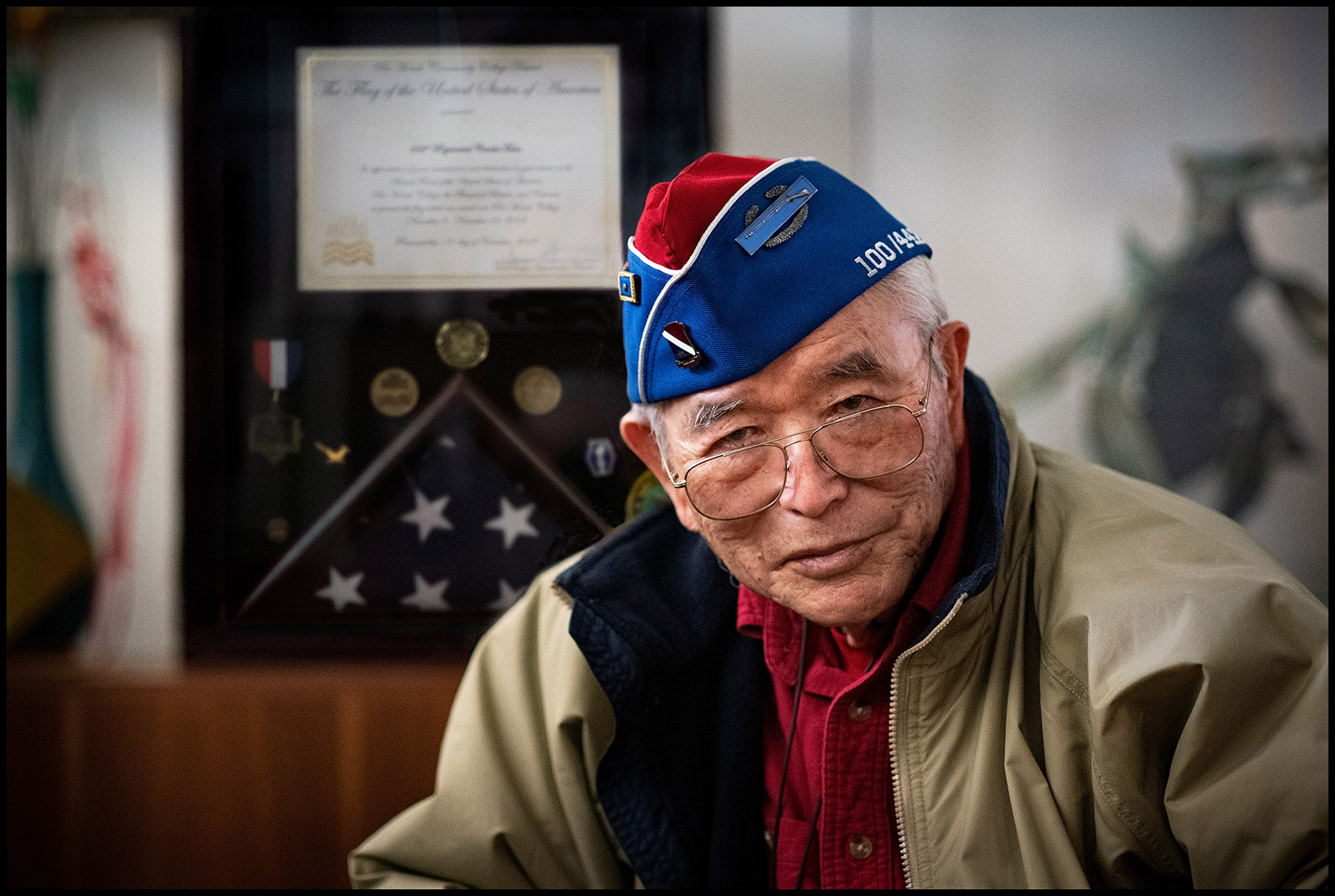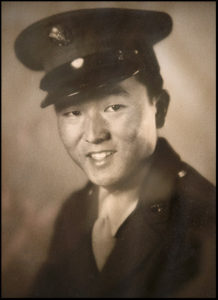
Yoshio Nakamura
Internee in CA. Joined Army
Served in Italy & France
Yoshio Nakamura
Staff Sergeant, Army Air Corps
1944-1946

Pvt. Yoshio Nakamura
Florida, 1944
We couldn’t hide our ancestry. We had Japanese faces but we had American hearts.
I was born in Rosemead, California in 1925. We had a farm there. I lost my mother when I was five, and my older brother became a second parent. He had tremendous integrity and shaped my philosophy. Later we moved to El Monte where I went to high school.
I was 16 when the war broke out, and the world went upside-down for us. Adult Americans of Japanese ancestry were classified as enemy aliens. There were so many rumors that even the Secretary of the Navy tried to blame the Japanese-Americans in Hawaii for aiding in the attack. We couldn’t hide our ancestry. We had Japanese faces but we had American hearts. Political leaders, newspapers and radio commentators all got on the propaganda bandwagon. It was an atmosphere of fear.
President Roosevelt was urged to enact Executive Order 9066. General DeWitt ordered all Japanese-Americans on the Pacific Coast to be rounded up and put into camps. We went to the Tulare Racetrack and could only keep what we could carry. The hardest thing to get rid of was my dog. In Tulare, soldiers with rifles and bayonets were placed along the street from the train station to the racetrack. The racetrack was roped with barbed wire with guard towers and searchlights. Armed soldiers were on top with what looked like machine guns. We were told it was for our protection, but everything was pointed inward. It was very humiliating. We could have visitors, but you had to talk to them through a window. The horse stalls were made into living quarters. There was no privacy. My first-grade teacher brought things we couldn’t get. We were there May through September, 1942. Then we were transported to the Gila River Camp in the Arizona desert.
We were asked to fill out a loyalty questionnaire with questions like, “Will you forswear allegiance to the Emperor of Japan?” How can you answer that if you never had allegiance? I felt the safest answer was “Yes”. Another question was, “Would you be willing to serve in the U.S. Armed Forces and go where ordered?” I said “Yes” because I wanted to show my loyalty to the country. There were others who said as long as their family was in there, they wouldn’t serve. The president was wrong in sending out that executive order. I felt that someday the country would discover that was a mistake. Later, I forgave the people who made those decisions.
I joined the Army on August 26, 1944. I was in a group of Japanese-American soldiers who were replacements for the 442nd Regimental Combat Team. We were ready to embark and someone got the measles. Until we were off quarantine, we couldn’t leave. Finally, we landed in France. Mark Clark of the 5th Army wanted the 442nd back in Italy. I was reassigned to M Company, which was a heavy weapons company. My job was carrying ammunition. We were to knock out the observation post on Mount Folgorito in the Apennines above the Po Valley. The Fifth Army had been stopped for six months. Every time they’d move, shells bombarded them. We climbed in total darkness and silence. We were able to surprise the outpost and capture a number of German troops. They didn’t know who we were because they were used to seeing Caucasians. We made a joke and told them that they must not have heard that Japan had joined the allies. The 442nd became the most highly decorated unit in U.S. military history. I joined them after they rescued the Lost Battalion. I’m proud of what I was able to do, which is just a little bit of what the 442nd did. The real heroes are buried.
I was discharged in 1946 as a staff sergeant. The GI Bill paid for my bachelor’s and master’s in fine art at USC. I taught art at Whittier High School from 1952-1963. I was the first faculty member to sign a contract when Rio Hondo College opened. In 2011 the 442nd went to Washington to receive the Congressional Gold Medal. In spite of a lot of things that have happened to me, I’m a pretty lucky and happy guy. {12-12-2019 • Whittier, CA}